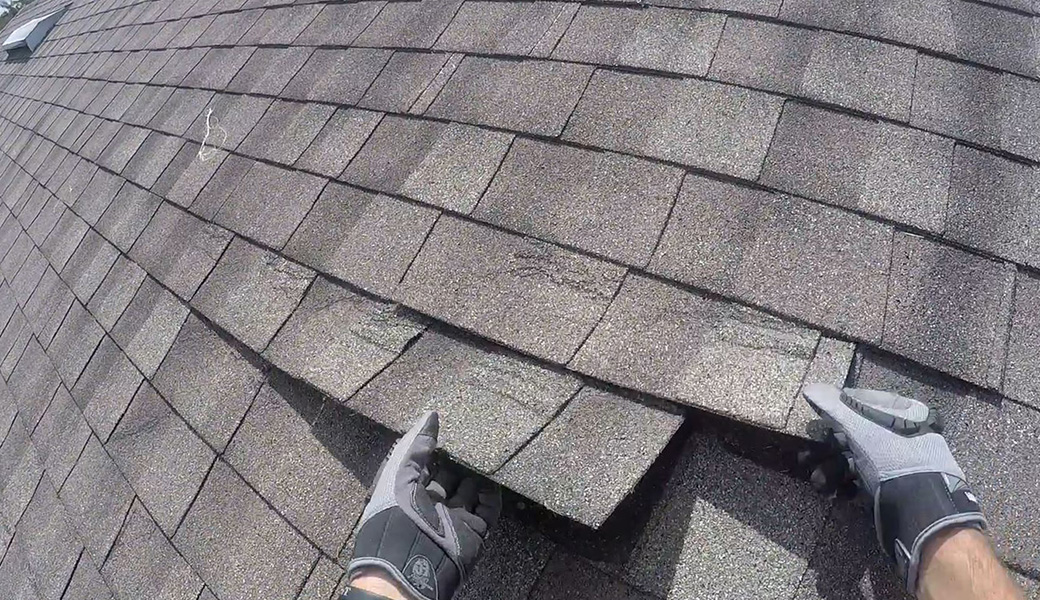High Winds and Your Roof — The Things You Should Look Out For
High winds are well known for ruining a perfectly good roof. Those that have fallen into disrepair before the wind hits are more likely to suffer than those that have been well maintained, but even 100% top-notch condition roofs can fall prey to periods of undesirable weather.

CHECKING YOUR ROOF — HOW TO DO IT
You don’t always need to go clambering around on your actual roof to see whether or not there is damage that requires professional assistance. You can sometimes see the damage quite obviously from the ground. Binoculars can help you take a closer look without having to subject yourself to a great height. But if you can’t see anything from ground level, you could always buy or hire a telescopic ladder if you don’t already have one, ready to get up close and personal with the structure.
We always recommend heading up into your attic as well as taking a look at the roof from the outside. You might see tears or damage that you can’t see from the outside, and you’ll also be able to keep your eyes peeled for any leaks.
Roofing contractors and companies in the area will be well-equipped to deal with roof assessments after high winds or other bad weather, and many of them offer free initial assessments. If there are no problems to worry about just yet, you’ll be given advice on what you can do ensure that continues to be the case. If there are problems, they can be attended to under warranty.
WHAT YOU SHOULD LOOK OUT FOR
1 - Do you have a flat roof?
You should make sure that any items or debris that has been blown up there by the high winds is taken down and cleared away. The roof drains should also be checked while you’re there, and cleaned out if necessary.
2 - Do you have tiles or shingles?
You're going to want to look out for any that look damaged — split, cracked, completely broken, or curling up/bulging at the edges. These are all signs that something has gone wrong.
3 - What about vents and caps?
You should make sure that your chimney stack still has the cap on, and that all your vents are still properly covered. If not, leaves, twigs, and other items can get down there, alongside pest animals and insects.
4 - Do you have solar panels on your roof?
Do they look broken? Or cracked? Have twigs and leaves started to accumulate on top of them? That can seriously reduce the amount of power they’re putting out, so it all should be taken away as quickly as possible.
5 - How does your guttering look?
Are all of the segments still straight? Does water leak out from any of the put-together pieces? Is the downspout still attached and directing water where it should go — away from your home. What about sagging or dropping, or even coming away from the building? These are signs that moss and other items could have clogged them up, resulting in standing water that is actually heavier than you’d think. Over time, the guttering can and likely will become unstable, and could even potentially collapse or get torn from the building all together.
6 - Are there air conditioning units on your roof?
These will need to be checked, not just for signs of physical damage, but also to ensure that all of the pipes, etc., are still where they should be and not torn or damaged in any way. You're not going to want a broken air con unit when the summer comes around.
7 - Are there trees growing close to your home?
You should get them trimmed if they are capable of making contact with your roof, or if there is a risk of being broken away from the tree and landing on your roof. You should also reconsider trees that could potentially fall down and onto or into your home, especially very large ones.
8 - Do you have skylights or roof windows installed?
The glass on these will need to be given the once-over, as well as the flashing around them. If there is any damage, it should be repaired immediately. Otherwise, leaks will soon start to form.
9 - Have you been inside the attic?
You should give the attic a good sniff to see if it smells like mold. Damp and excess moisture tends to leave an unpleasant smell in the air, and is often one of the first tell-tale signs of water damage.
You should also have a good look around, with full light — a flashlight or similar. Look for shiny patches of wetness, or anything that looks like it could be mold or other biological organisms. These can be dangerous to human and animal health and will need to be resolve quickly, efficiently, and safely.
Visit our Roof Contractor home page to learn more about us, or hire a local professional from over 100 USA locations.

